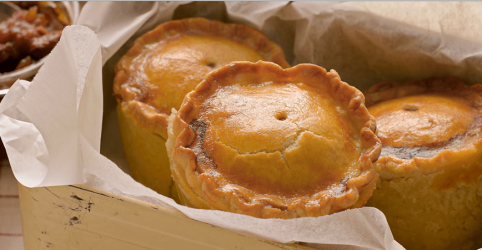Hot water pastry is used in hand-made pie crusts and is durable enough to hold some heavy fillings such as meats and root vegetables. It is a great, savoury choice and can be made in a relatively short amount of time.

If you are looking to make the pastry for your pies, here are a few tips for you to focus on.

If you are looking to make the pastry for your pies, here are a few tips for you to focus on.
- Use lard, butter or a mixture of the two when making hot water pastry.
- Lard will give the pastry the fat, but the butter will give the pastry the flavour.
- To make a hot crust 'dough', the lard and butter are melted in a pan of water and brought to the boil.
- This is then poured directly into the flour mixture.
- You would then bind them together using a wooden spoon; this allows some of the heat to escape and lets the dough cool slightly.
- When cool enough to touch, place on a work surface and knead.
- Once you are happy with the consistency, roll out whilst still warm.
- For the fillings, you want to ensure that they are moist and flavoursome.
- You could add fillings such as lamb, pork, potatoes, mushrooms, leeks, etc.
- But ensure you crimp the lid to seal the contents.
- If the pie crust is too thin, your filling can ooze out.
- Too thick, and it might not bake properly.
- Put the correct amount of filling in the dough.
- Not enough filling, and you create an air pocket.
- Too much filling and the contents will spill over during baking.
- Fill the pastry to about 1cm off the top of the pie; this will allow enough room to place and seal the lid.
- Ensure you put a hole in the lid; this allows the steam to escape whilst baking.
- Eggwash the pastry to help give it a lovely browning colour.
- If you are putting sausage meat in the hot crust pastry, be advised that it shrinks when baking, so you may wish to add jelly/gelatin stock to it when it's baked to fill the gap and keep the contents moist and flavourful.
Last edited:
